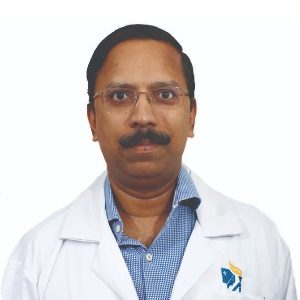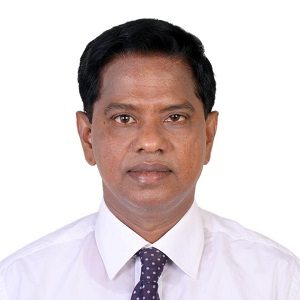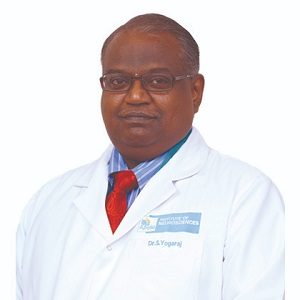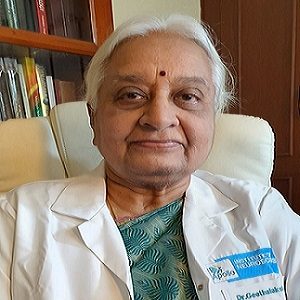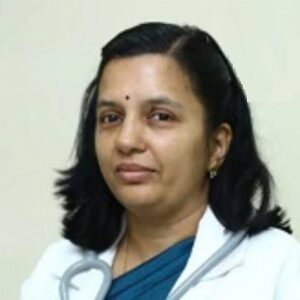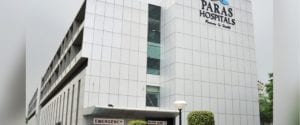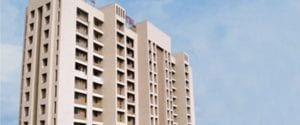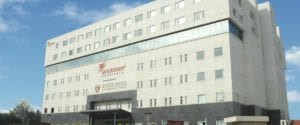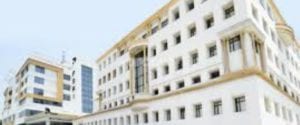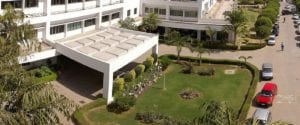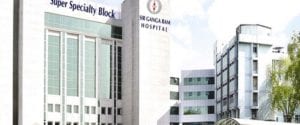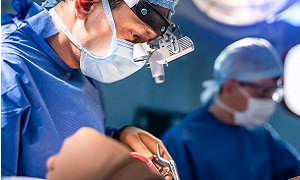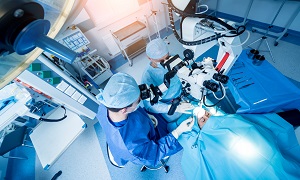Best Stroke surgery Surgeons in India
- Neurosurgeon, Mumbai, India
- Over 20 years’ experience
Profile Highlights:
- Dr. Suresh Sankhla is an accomplished Neurosurgeon in Mumbai specializing in endoscopic neurosurgery and onco-neurosurgery.
- Dr. Sankhla acquired his training in neurosurgery under the guidance of the best trainers from well-known medical institutes and hospitals in Ireland, UK, USA as well as India.
- He has an equal interest in research and has published more than 100 articles, papers, and abstracts in renowned national and international peer-reviewed journals.
- Interventional Neuroradiologist, Gurugram, India
- Over 20 years’ experience
Profile Highlights:
- Dr. Tariq Matin is a Neurologist in Gurugram specializing in Interventional Neuroradiology.
- He holds over a decade of experience in the field and holds a fellowship from Foch Hospital, France in interventional neurosurgery and also received his training from AIIMS in Delhi.
- He provides treatment for acute ischemic stroke with the use of mechanical and chemical thrombolytic agents and endovascular coiling of complex aneurysms.
- Neurologist, Chennai, India
- Over 33 years’ experience
Profile Highlights:
- Dr. Arulselvan V L is one of the finest Neurologists in India, with an overall experience of nearly 33 years.
- Dr. Arulselvan was bestowed with an Excellence Award for aptitude in Anatomy in his academics.
- He takes a holistic approach to treating conditions like Myelitis, Encephalitis, Meningitis, Cerebral or Brain Aneurysm, PSR, PBC, Brain Tumor Surgery, and Sleep Disorders and performs different therapies.
- He has a periodical ‘JIAN’ under his name.
- Neurologist, Chennai, India
- Over 30 years’ experience
Profile Highlights:
- Dr. Rajendran S is a veteran Neurologist in Tamil Nadu with nearly 3 decades of experience.
- Dr. Rajendran acquired advanced training in Neuropsychiatry from Cardiff, UK, and also obtained M.Sc. in Clinical Neurology from London.
- He treats conditions like Stroke, Parkinson’s Disease, Back & neck pain, Neurological dysfunction, Surgical Clipping, Endovascular Coiling, Cerebral Angioplasty, Lesionectomy, MVD, PSR, and Restless Leg Syndrome, etc.
- Neurologist, Chennai, India
- Over 24 years’ experience
Profile Highlights:
- Dr. S. Yogaraj is an experienced Neurologist in India, having over 24 years of experience in the field.
- He specializes in treating emergency neurology conditions like stroke, neuromuscular disorders, CNS infections, Peripheral Nerve issues, etc.
- Dr. Yogaraj is instrumental in designing, implementing, and reporting electrophysiological training. He trained physicians, neurologists, and paramedical staff.
- Neurologist, Chennai, India
- Over 45 years’ experience
Profile Highlights:
- Dr. Dhanaraj is a recognized neurologist in India with 45+ years of experience.
- Dr. Dhanaraj was awarded Life Time Achievement Award from Tamil Nadu DR. MGR University, Chennai for his exemplary services.
- He presented about 50 research papers and received awards for a couple of them. Dr. Dhanaraj also authored a book on Acute Cardiovascular disease.
- Neurologist, Chennai, India
- Over 45 years’ experience
Profile Highlights:
- Dr. Geetha Lakshmipathy is one of the most renowned Neurologists in India with a rich experience of more than 45+ years. Her experience stretches across academic, research, clinical, and administrative work.
- Dr. Geetha Lakshmipathy offers the best medical services for Nerve and Muscle Disorders, Brain mapping, Spinal Disorders, Digital Subtraction Angiography, Epilepsy Treatment, Deep Brain Stimulation, skull surgery, Peripheral Neuropathy (Diabetic/ CIDP/ CIDP), etc.
- Dr. Lakshmipathy presented and published many research studies at various places and guided students of DM-Neurology for their thesis.
- Neurologist, Chennai, India
- Over 50 years’ experience
Profile Highlights:
- Dr. Panneer is one of the most renowned Neurologists in India with huge 50+ years of research and clinical experience in the field.
- Dr. Panneer is believed to have expertise in Migraine treatment and neurological disorders management.
- He offers consultation and medical services for Neurosurgery, cerebral angioplasty, Stereotactic Radio Surgery, PBC, Alcohol Withdrawal Syndrome, sleep disorders, skull base surgery, etc.
- Pediatric Neurologist, Chennai, India
- Over 26 years’ experience
Profile Highlights:
- Dr. Sivaji Vani serves as a Pediatric Neurology Consultant at Apollo Hospitals, Chennai.
- Before Chennai, she served in the UK and has developed a sound knowledge in the field of Pediatric Neurology.
- Her overall experience of 26 years involves the treatment of patients with giddiness problems, neurological problems, vertigo, epilepsy, stroke, spinal disorders, etc.
Best Stroke Surgery Hospitals in India
Paras Hospital, Gurugram
- City: Gurugram, India
Hospital Highlights:
- Paras hospital was established in 2006 and is the 250 bedded flagship hospital of Paras Healthcare.
- The is supported by a team of doctors of international and national repute.
- The hospital is NABH accredited and also the first hospital in the region to have a NABL accredited laboratory.
- The hospital provides specialty medical services in around 55 departments including Neurosciences, Joint Replacement, Mother & Child Care, Minimal Invasive Surgery, Gynecology and Obstetrics, Ophthalmology, Dermatology, Endocrinology, Rheumatology, Cosmetic and Plastic surgery.
- The hospital is equipped with state-of-the-art technologies.
S L Raheja Hospital, Mahim, Mumbai
- City: Mumbai, India
Hospital Highlights:
- SL Raheja hospital is a 140-bed multi-specialty tertiary care hospital that is being managed by Fortis Healthcare Ltd.
- The hospital is a benchmark in healthcare and medical facilities in the neighborhood of Mahim & the western suburbs.
- L.Raheja Hospital, Mahim has one of the most effective ICU and Casualty care services.
- The hospital provides specialty medical services in Cardiology, Oncology, Neurology, Orthopedics, Mother & Child Care, and in Diabetes.
Wockhardt Hospitals, Mumbai
- City: Mumbai, India
Hospital Highlights:
- Wockhardt Hospitals were established in the year 1973, originally called First Hospitals and Heart Institute.
- Wockhardt Hospitals are super specialty health care networks in India, nurtured by Wockhardt Ltd, India’s 5th largest Pharmaceutical and Healthcare company.
- Wockhardt Hospitals is associated with Partners Harvard Medical International, an international arm of Harvard Medical School, USA.
- Wockhardt Heart Hospital performed India’s first endoscopic heart surgery.
- The hospital has a state-of-the-art infrastructure equipped with the latest technologies and modern equipment.
- It has special Centers of Excellence dedicated to the major specialties to provide hassle-free and high-quality clinical care.
Pushpawati Singhania Hospital & Research Institute, New Delhi
- City: New Delhi, India
Hospital Highlights:
- Established in 1996, Pushpawati Singhania Research Institute is one of the top hospitals in the NCR region, as well as one of the top facilities in India for gastroenterology. The hospital is one of South Asia’s first institutes in medical and surgical treatment for diseases related to digestion.
- The hospital is equipped with state-of-the art facilities coupled with the latest equipment as well as renowned consultants from various parts of India as well as other parts of the world.
Indian Spinal Injuries Center, New Delhi, India
- City: New Delhi, India
Hospital Highlights:
- The Indian Spinal Injuries Center (ISIC), provides state-of-the-art facilities for the management of all types of spinal ailments.
- Staffed with internationally trained, acclaimed, and dedicated spine surgeons, the hospital provides cutting-edge medical & surgical technology. The hospital provides comprehensive management of spinal injury, back pain, spinal deformities, tumors, osteoporosis, etc.
- The hospital performs motion-preserving spine surgeries including disc replacement and dynamic fixation, and minimally invasive spine surgeries such as endoscopic disc excision.
- The orthopedic service of the hospital covers all orthopedic ailments including trauma, joint diseases & replacements, oncology, pediatric orthopedics & upper limb ailment.
W Pratiksha Hospital, Gurgaon
- City: Gurugram, India
Hospital Highlights:
- W Pratiksha Hospital, Gurugram, is one of the best hospitals in the NCR region. It is also a top hospital in India for IVF. Since its inception, the hospital has performed over 5500 successful IVFs. The hospital also specializes in gynecology.
- With over 20 years of experience in providing quality healthcare, the hospital is known as one of the most trusted and valued health providers in India.
- Equipped with world-class medical facilities and advanced technology, the hospital’s doctors and clinicians also have a track record of delivering excellent results. The hospital is also known for focusing on preventive well-being as much as on curative treatment.
- The hospital has earned the trust of its patients, by providing the best available treatments at affordable costs.
Narayana Superspeciality Hospital, Gurugram
- City: Gurugram, India
Hospital Highlights:
- Situated near DLF Cyber City, Gurugram, Narayana Superspecialty Hospital is one of the top medical facilities in the Delhi NCR region, catering to the needs of the people. Known for its commitment to quality medical care and patient service, the hospital is a state-of-the-art facility with planned and well-equipped sections, which includes a spacious OPD area as well as comfortable patient rooms.
- It is the closest super-specialty hospital from Indira Gandhi International Airport towards Gurugram, and also the nearest super specialty hospital from DLF Cyber City. It is also close to major residential areas in Gurugram.
- It is part of the renowned Narayana Health Group. Established in 2000, by Dr. Devi Shetty, a renowned cardiac surgeon, it has grown to be one fo India’s leading healthcare groups.
Sir Ganga Ram Hospital, New Delhi
- City: New Delhi, India
Hospital Highlights:
- Sir Ganga Ram Hospital, New Delhi is known to provide the latest medical procedures with the latest technology in all of its units.
- The hospital has a team of reputed doctors, nurses, and healthcare professionals that ensure that patients receive quality care at affordable costs.
- Staffed with a team of highly qualified doctors, dedicated nurses, and paramedical and non-medical staff, the hospital aims to lead in healthcare delivery, medical education, training, and research.
- As per the vision of the founder, the hospital also provides free treatment to the economically weaker sections of society.
- Sir Ganga Ram Hospital also provides training to young doctors under the Diplomate in National Board(DNB) program. The DNB program at the hospital was started in 1984 and it is known for currently running the maximum number of DNB specialties in the country. It also has the distinction of having the first bone bank in India.
KIMS Hospital, Hyderabad
- City: Hyderabad, India
Hospital Highlights:
- KIMS Hospital (a brand name of Krishna Institute of Medical Sciences) is one of the largest and best multi-speciality hospitals in Hyderabad. The hospital provides various treatments to an enormous number of patients.
- The hospital has a capacity of more than 3000 beds. KIMS Hospitals offers different healthcare services in more than 25 specialities and super specialities.
- The hospital is equipped with modern medical equipment and technology. It has robotic equipment to provide minimal invasive techniques for patients.
- The hospital is aimed at providing world-class healthcare facilities and services at an affordable cost for patients.
- The various specialities and departments of the hospital include neurosciences, gastroenterology & hepatology, robotic science, reproductive sciences, dental science, oncological sciences, organ transplantation, heart and lung transplantation and mother and child care.
Fortis Hospital, Shalimar Bagh
- City: New Delhi, India
Hospital Highlights:
- Fortis Hospital in Shalimar Bagh is a multi-super specialty hospital that strives to provide world-class patient care by leaving no stone unturned.
- Fortis, Shalimar Bagh, with 262 beds and a 7.34-acre footprint, provides the best level of medical care through its team of doctors, nurses, technicians, and management professionals.
Stroke
When one of the blood vessels in the brain ruptures and bleeds and the blood supply to the parts of your brain is interpreted, this prevents the brain from receiving essential nutrients and oxygen. This can cause damage as well as the death of brain cells within a few minutes.
A stroke is considered a medical emergency and it is extremely important that prompt treatment is provided to reduce brain damage or other complications.
Fewer people die of stroke today as compared to the past due to advanced treatment.
Symptoms of Stroke
If you or anybody is having a stroke, it is important to pay attention to the symptoms as they begin, as treatment is more effective if it is provided sooner. Some of the signs of a stroke can include:
- Paralysis
- Confusion
- Trouble speaking or understanding
- A feeling or numbness or weakness in the arm, face, and leg on one particular side of the body
- Trouble walking and/or loss of balance
- Slurring speech
- Vision problem
- Severe and sudden headache
- Dizziness
If you see someone with signs of strokes, don’t wait to see if the symptoms stop. Call a local emergency immediately, as the sooner a stroke is treated, the more the chances are that brain damage and disability can be prevented.
Types and causes of Stroke
There are two different causes of stroke: a blocked artery, which is called ischemic stroke; or the leaking and/or bursting or a blood vessel, which is called a hemorrhagic stroke.
Ischemic stroke: This kind of stroke is more common and it occurs when the brain’s blood vessels get narrowed or blocked. This causes the blood flow to get reduced severely. Blocked and narrowed blood vessels are a result of fatty deposits that build up in the blood vessels. It can also be caused by blood clots or other debris that can travel through the bloodstream and lodge in the brain’s blood vessels.
Hemorrhagic Stroke: Hemorrhagic stroke is caused when a blood vessel in the brain leaks and ruptures. Brain hemorrhages can happen due to many conditions that affect the blood vessels. Some of these factors can relate to hemorrhagic stroke:
- Uncontrolled high blood pressure
- Bulges at weak spots in your blood vessel walls
- Overtreatment using blood thinners
- Trauma (such as an accident)
- Protein deposits in the walls of the blood vessel leading to weakness in the vessel wall
- Ischemic stroke leading to hemorrhage
Transient ischemic attack (TIA)-
A transient ischemic attack also referred to as a ministroke, is a temporary period of symptoms that are similar to those that one has in a stroke. It doesn’t cause permanent damage. It can be caused by a temporary decrease in blood supply to the brain, which can last for as little as five minutes.
It is important to seek emergency care, as it is not possible to know whether you had a stroke or TIA by looking at the symptoms alone. If you had a TIA, it could mean you have a partially blocked or narrowed artery that leads to your brain. Having a TIA can increase your risk of having a full-blown stroke.
Diagnosis of Stroke
While assessing a stroke patient, it is important to determine whether the patient is suffering an ischemic or hemorrhagic stroke. Once this is determined, the proper treatment can begin. Uuslaly the first test that is performed is a CT scan or an MRI.
CT scan
CT scanning is the combining of special x-ray equipment with multiple computers to produce images of the inside parts of the body. The CT of the head is used to detect a stroke from a blood clot or bleeding within the train. CT autography might also need to be performed to improve the detection and characterization of stroke.
MRI
MRI is another method, where a powerful magnetic field, radio frequency pulses as well as a computer is used to produce detailed pictures of organs, bones, soft tissues and other internal body structures. It can also be used to image the cerebral vessels which is called MR angiography. Using MRI of the head, brain damage from a stroke can be assessed.
Your doctors might also use other methods to help in determining the type, location and cause of a stroke. These can include blood tests, Electrocardiogram, carotid ultrasound and cerebral angiography.
Treatment options for Stroke
Treatment for ischemic stroke
Treatment for Hemorrhagic Stroke
This kind of stroke requires you to find and control the bleeding. The most common reason for this kind of stroke is uncontrolled high blood pressure. If this was your reason, you will need medicine to lower it.
If the stroke was caused by an aneurysm, your doctor can clamp the broken vessel closed or thread a tiny coil through it in order to prevent the blood vessel from bursting again.
The doctor may perform surgery to remove the blood if the area of bleeding is large. Surgery is also used to repair problems related to blood vessels, which are associated with hemorrhagic strokes.
Once the cause of your stroke is treated, your doctor will work with you to lower your chances of experiencing another one. They might help you in keeping your blood pressure in a healthy range.
Risks of Stroke
The following factors can increase the risk of having a stroke
- Being overweight or obese
- Physical inactivity
- Heavy drinking
- Use of illegal drugs like cocaine
- High blood pressure
- Cigarette smoking or exposure to secondhand smoke
- High cholesterol
- Diabetes
- Obstructive sleep apnea
- Cardiovascular diseases, which can include heart failure, heart defects, heart infection or abnormal heart rhythm
- Having a personal or family history of stroke, heart attack or transient ischemic attack
Complications of Stroke
A stroke can lead to temporary or permanent disabilities which depend on how long the brain attacks the blood flow and which part was effective.
Some of the complications include:
- Paralysis or loss of muscle movement- You might become paralyzed on one side of your body as a result of stroke or even lose control of certain muscles such as the ones on one side of your face.
- Memory loss or difficulty in thinking- Many people who have experienced strokes have had some difficulty in thinking, reasoning and understanding and have also shown signs of memory loss.
- Difficulty in talking or swallowing- A stroke can affect control of the muscles in the mouth and throat, which makes it difficult for one to talk properly, eat or swallow. One might also have difficulty with language, including understanding speech or reading.
- Emotional Problems- People who have suffered from strokes can also experience difficulty in controlling their emotions and they might develop depression as well.
- Pain- Pain, numbness and such sensations can also occur in parts of the body, which is affected by stroke.
- Changes in behavior and self-care ability- People who have suffered strokes can also become more withdrawn. They might need help with grooming or daily chores.
Rehabilitation
Prevention of Stroke
It is important to follow the following steps and strategies if you are looking to prevent stroke:
- Controlling high blood pressure or hypertension- This is one of the most important things that one can do to reduce the risk of stroke. If you’ve suffered a stroke, lowering your blood pressure can prevent a further TIA or a stroke. Along with medications, you will need to make changes to your lifestyle to treat high blood pressure.
- Managing Diabetes- Proper diet, exercise and maintaining a healthy weight can help in keeping the blood sugar in a healthy range. This can decrease the risk of stroke.
- Quitting Tobacco Use- Smoking raises the risk of stroke not just for smokers and non-smokers who are exposed to second hand smokers.
- Lowering the amount of cholesterol and saturated fat in your diet- Eating less cholesterol and fat, especially saturated fat and trans fats can help in reducing the buildup in the arteries. If your cholesterol can’t be controlled through dietary changes, then your doctor might prescribe you a medication for lowering cholesterol.
- Eating a diet rich in fruits and vegetables- A diet that contains five or more daily servings of fruits and vegetables can also help in reducing the risk of stroke.
- Regular exercise- If you exercise regularly, it will significantly reduce the risk of stroke as well. Exercise can also help in losing weight, controlling diabetes as well as reducing stress. Try to provide your body with at least 30 minutes of moderate physical activity daily.
- Reducing alcohol consumption and avoiding illegal drugs- If you consume too much alcohol, it can also lead to a high risk of blood pressure, ischemic strokes and hemorrhagic strokes. However, moderate drinking will help in preventing ischemic stroke as well as decreasing the clotting tendency of the blood. Street drugs such as cocaine and methamphetamine can also increase the risk of a TIA or stroke.
There are also preventive medications that can be recommended by your doctor, to help reduce your risk of stroke. Antiplatelet drugs can make the platelets in your cells less sticky and less likely to clot. Aspirin is the most commonly used antiplatelet medication. It is also important that your doctor recommends the correct dosage of aspirin for you.



